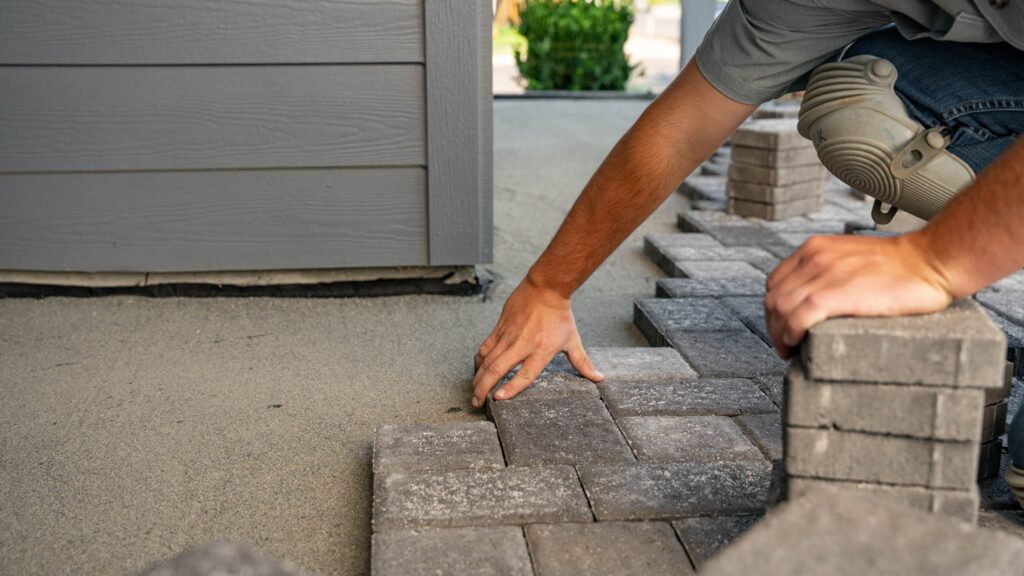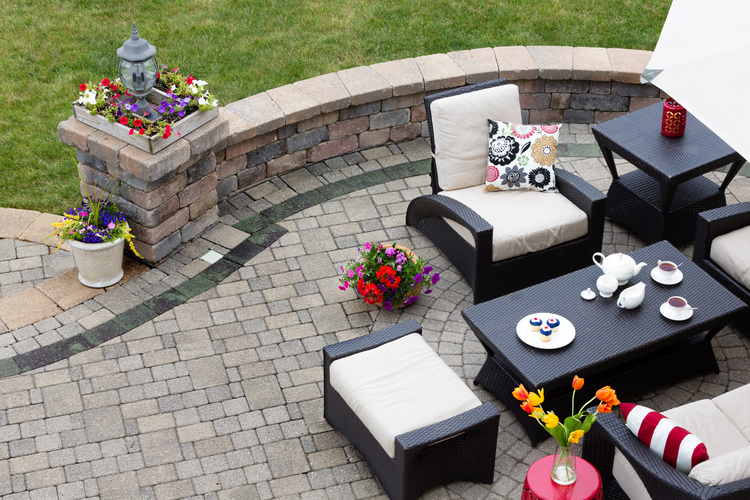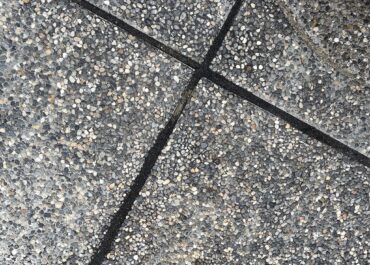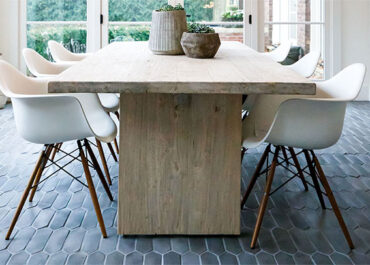
Installing pavers is never an easy task for beginners. It’s a doable process, sure, but sometimes it will require a little bit of patience above all – especially when we talk about home renewal. In this regard, spicing up your old patio might be a good course of action, and there’s no better way to do that than with pavers. But how do we make it work when faced with a solid floor such as concrete? Is it possible to install pavers over a concrete patio, for instance?
Well, we’re glad to tell you that it is totally possible. Despite needing a few tools to renew your outdated backyard, you won’t need to remove the concrete itself to get impeccable results.
Keep reading to find out how! Or, in case you want to browse the options available to you – including brick and porcelain pavers – check out the full catalog here.
Tools and resources you’ll need for installation
To avoid any future inconveniences from faulty projects, you’ll need to get your hands on the right equipment. The following list of tools can be found at most construction stores near you. Of course, you can either buy or rent them as you please:
- caulk gun
- chalk line
- leather gloves
- plate compactor
- scrub brush with handle
- shovel
- tape measure
- utility knife
- pressure washer
- drill
Along with those come the materials to fill up the patio, which include:
- 2×6
- ¾-in
- concrete cleaner
- landscape fabric
- pavers
- polyurethane construction adhesive
- sand
- concrete pipe
Things to know before you begin
The hardscaping industry takes various skill sets into account. That’s why most homeowners prefer to contract professional services for this kind of work. As much as this can be a DIY process if you follow this brief guide closely, you should still get assistance from an expert when it comes to measurement and specific details about your project.
You see, some concrete surfaces are unleveled, chipped or even cracked from climate exposure. Driveways, in particular, are the main victim in this – concrete surfaces are meant to look practical, not beautiful after all. Pavers will help with the latter, of course, but some projects will require more work than others.
That said, installing pavers over concrete will save you a considerable amount of money. Since the other two options are either tearing apart your concrete patio or pouring new concrete over the old one, dressing up the area with pavers is something totally worth it.
How to install pavers over a concrete patio: step by step
If you have decided to spend your own time and effort to make this work, good for you! Although we still recommend professional help, renewing flat home patios won’t be that tricky if you have acquired the aforementioned tools. After buying your preferable pallet of pavers, follow the steps below:
STEP 1: Inspect for drainage problems
First and foremost, you must ensure that the area in question is sloped enough for a water runoff. A bad installation will prevent the water from escaping the joints between the pavers and the concrete, creating dirty puddles of unwanted water. You may use the drill to make drainage holes a few inches from each other.
STEP 2: Clean the surface
The pressure washer comes in handy here. Blast all the grime off the existing surface with the concrete cleaner to prepare the set of pavers. Wait for it to dry before starting the installation.
STEP 3: Cover the old concrete patio
After planning every inch of the project by using the measuring tools from before, it’s time to cover the patio with a coarse sand layer. A good foundation needs to be between ½ inch and 1 inch deep.
STEP 4: Lay out the pavers
Place the pavers, one by one, over the top of the sand as desired. Use the plate compactor and scrub brush to make sure all of them are secured together, including the joints. Don’t be shy to use more sand if necessary.
STEP 5: Hold the perimeter in place
Use the polyurethane construction adhesive to hold the pavers together along the whole surface.

Sealing and maintenance
Once your new patio is completed, it’s time to seal it thoroughly in order to extend its lifetime. With the exception of porcelain, which is a non-porous material, every other paver like brick and concrete needs to be protected from moss and mold. That will preserve their bright colors as well, so it’s usually something that nobody leaves out of the final project.
Read our Complete Guide on Paver Sealing to see how this works.
As for general maintenance, routine cleaning is something that varies greatly depending on the area you live. Although sealing keeps most natural elements from being absorbed, transmission fluid and tyre marks are common occurrences to deal with. Just make sure to follow the instructions of the fabricator.
Get yourself the best supply and installation services in town!
After reading how to install pavers over a concrete patio, maybe you’ve realized it’s harder than it sounds. There are a lot of specifics you need to consider, after all, but for that you don’t need to worry – Eagle Pavers is here for you!
As a branch of Eagle Stones, our staff counts with years of expertise in hardscape. We supply products from all over the world and provide installation services for all the counties around Sarasota, Florida. Click here to visit our showroom – and don’t hesitate to contact us as soon as possible! Let us walk through your dream patio with the most beautiful pavers.




